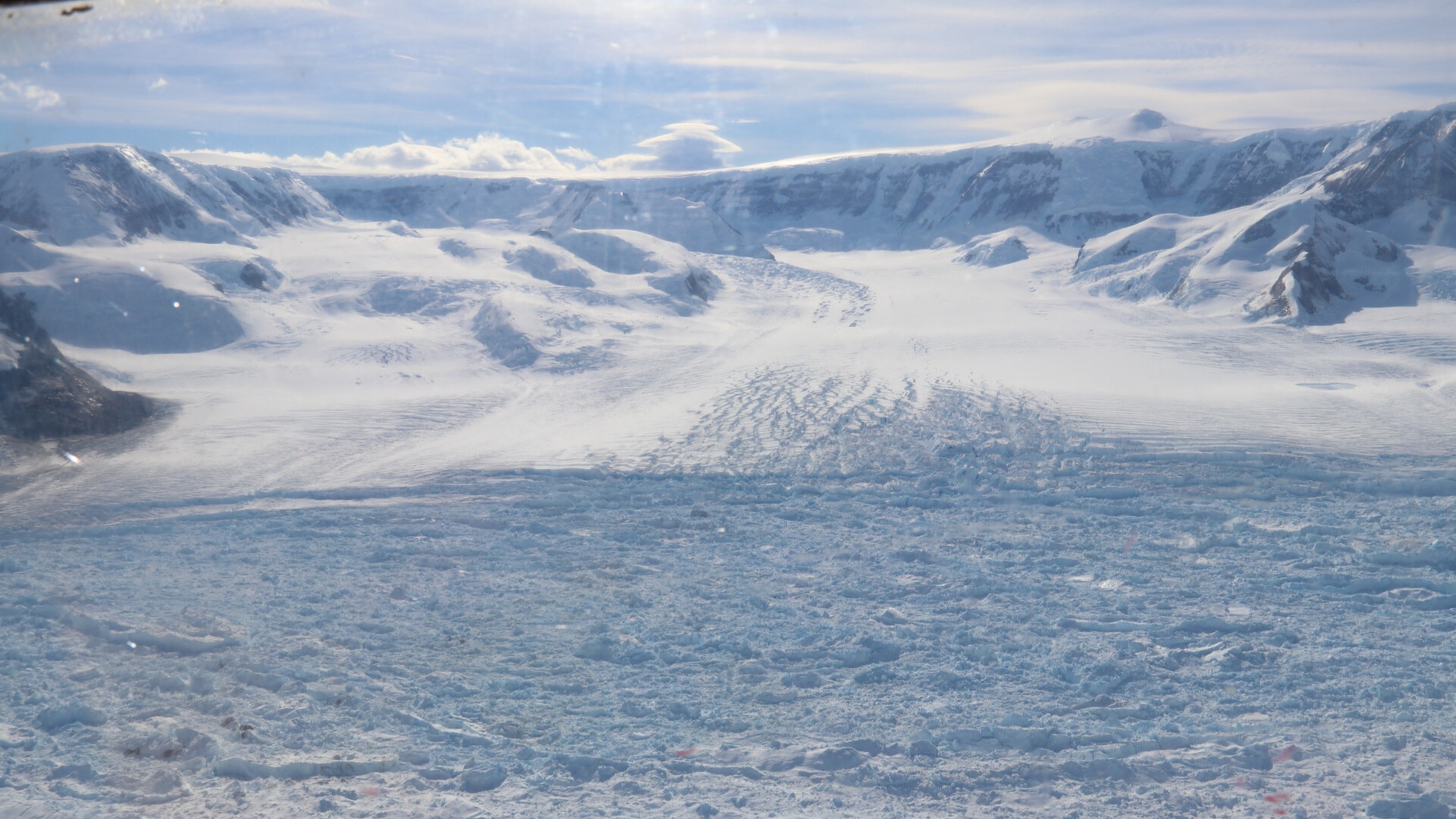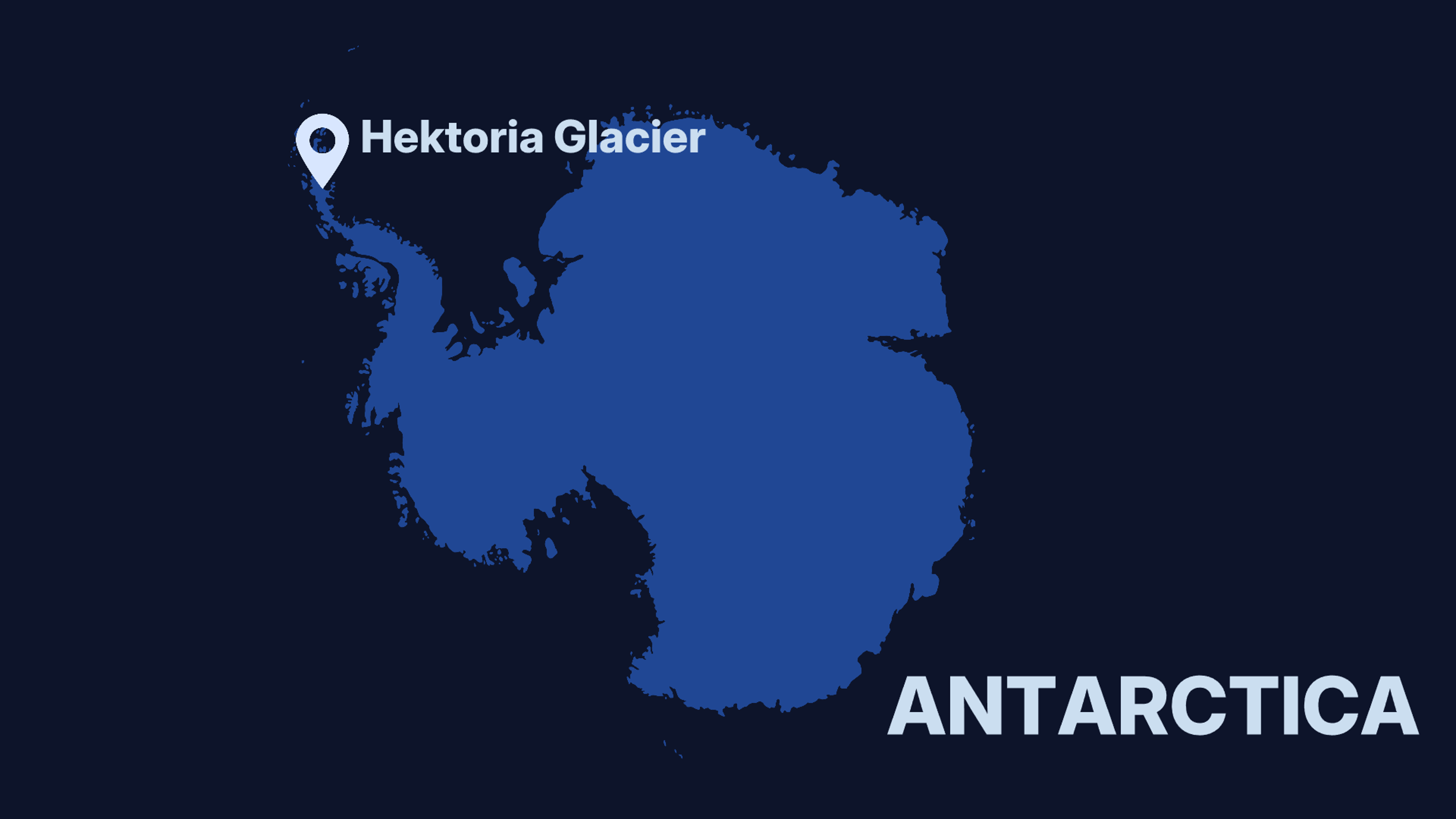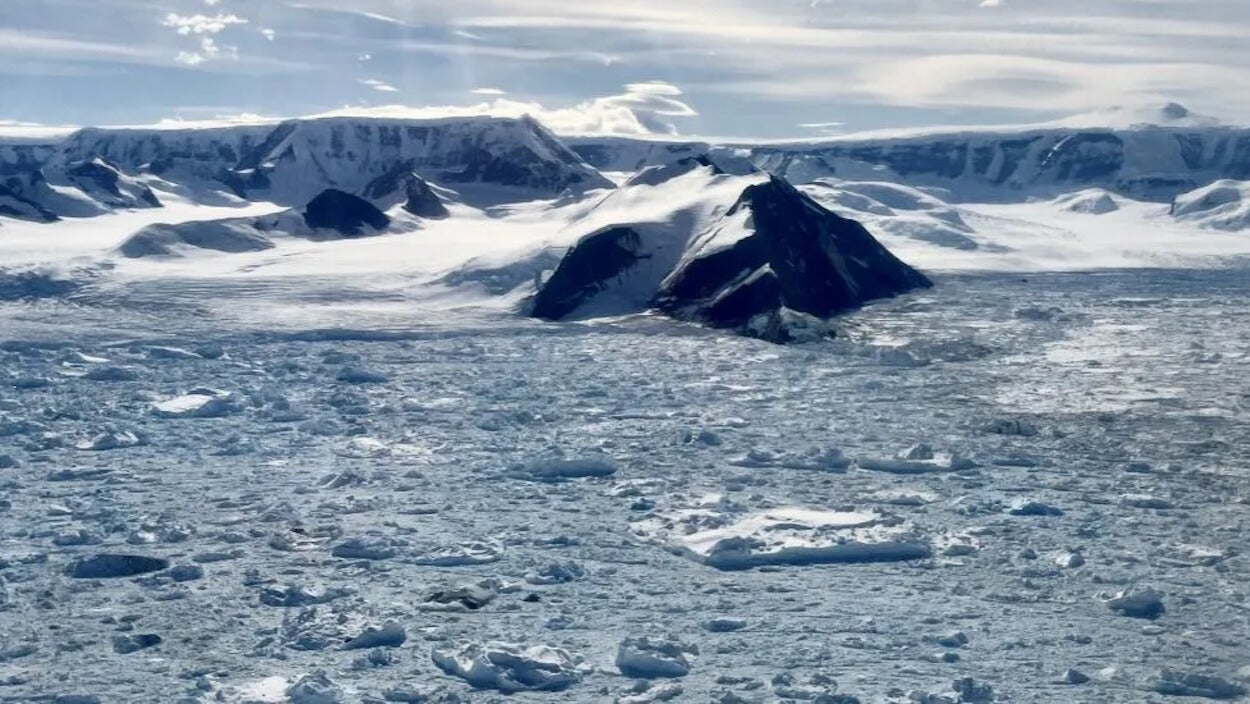
Hektoria glacier on Antarctica’s Eastern Peninsula.
(Naomi Ochwat/CIRES)
Antarctica’s Hektoria Glacier may be considered small, but the amount of ice it has lost in record time is a really big deal.
The glacier is about 115 square miles (or roughly the size of Philadelphia), and it lost nearly half its ice in just two months’ time, equivalent to about 5 miles of ice between November 2022 and January 2023.
A new study, led by researchers at the University of Colorado Boulder and published this week in Nature Geoscience, explains how this unprecedented collapse happened and why it could be a troubling sign for other glaciers across the frozen continent.
Weather in your inbox
By signing up you agree to the Terms & Privacy Policy. Unsubscribe at any time.
(MORE: Did You Forget Something With The Time Change?)
“Hektoria’s retreat is a bit of a shock — this kind of lightning-fast retreat really changes what’s possible for other, larger glaciers on the continent,” said Ted Scambos, a senior research scientist for the Cooperative Institute for Research in Environmental Sciences (CIRES). He added, “If the same conditions set up in some of the other areas, it could greatly speed up sea level rise from the continent.”
How The Glacier Lost So Much Ice In Such A Short Time
While the speed of glacier movement can vary, most move rather slowly. Creeping downhill with the help of gravity and their own weight. They can move a couple of feet per year or a few hundred feet per year, depending on the glacier.
However, Hektoria’s retreat was mind-blowing.

Photo of the Hektoria Glacier in Antarctica.
(Naomi Ochwat)
The record retreat was actually discovered by accident. Researchers were surveying the area surrounding the glacier using satellites and remote sensing for a separate research study on the well-documented Larson B Glacier. They were trying to get a better understanding of why sea ice broke away from the glacier a decade after the ice shelf collapse in 2002.
(WATCH: Thousands of Bats Swarm Before Typhoon Strikes Philippines)
While analyzing satellite images and seismic instruments from the study surrounding the Larson B Glacier, Naomi Ochwat could clearly see the rapid breakup of the Hektoria Glacier.
“If we only had one image every few months, we might have missed it entirely,” said Ochwat, lead author and postdoctoral researcher at CIRES. “But by combining multiple satellites, we could actually watch this glacier retreat two and a half kilometers in just two days.”

This graphic shows where the Hektoria Glacier is located.
Many glaciers in Antarctica are considered tidewater glaciers. This means they rest on the seabed with their edges in the ocean. However, researchers discovered that the Hektoria Glacier sits atop a flat stretch of bedrock known as an ice plain. Previous research shows that 15,000-19,000 years ago, these particular glaciers with ice plains retreated hundreds of meters per day, which has helped the researchers better understand Hektoria’s rapid retreat.
Once the glacier had retreated significantly, it lifted off the seafloor and began to float, a process scientists call “going afloat.” That change exposed it to ocean currents and waves that tore open cracks from below while surface fractures formed from above. When those crevasses met, massive chunks of ice calved away — triggering a chain reaction that caused nearly half the glacier to collapse.
(MORE: Try These 15 Winter Weather Life Hacks)

This image was taken from the Hektoria Glacier, looking away. You can see the rotating icebergs.
(Naomi Ochwat)
“When we flew over Hektoria in early 2024, I couldn’t believe the vastness of the area that had collapsed,” said Naomi Ochwat, lead author and CIRES postdoctoral researcher. “I had seen the fjord and notable mountain features in the satellite images, but being there in person filled me with astonishment at what had happened.”
Seismic sensors even picked up what scientists call “glacier earthquakes,” or vibrations caused by large sections of ice breaking apart and slamming into the sea. Those signals confirmed that Hektoria had been grounded on solid rock before the collapse, meaning the ice loss directly contributed to rising sea levels.
Small Glacier, Big Warning
Similar ice-plain topography has been detected beneath several larger glaciers across Antarctica, including some that hold enough ice to raise sea levels significantly if they were to retreat this quickly.
For now, Hektoria stands as a dramatic example of how fragile even long-frozen parts of Antarctica can be.
Jennifer Gray is a weather and climate writer for weather.com. She has been covering some of the world’s biggest weather and climate stories for the last two decades.


